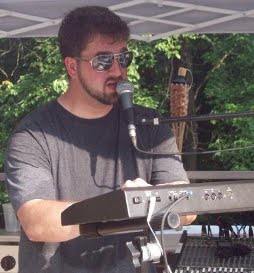1) The technology involved the process can be very simple. Students can take pictures with a digital camera, put them into Windows Movie Maker, add a few captions and some audio, and have a finished product.
2) The technology involved the process can be very challenging. Or anywhere in between. There's really something for students of all tech abilities here. While the basic users might take fewer pictures and spend more time learning how to import them, or change the length of each picture in the timeline, more advanced users could make more fluid productions, taking more pictures, and saving time in the editing and production, where they have more familiarity. These students should not be hemmed in to using a specific program, but could be free to choose other editing programs based on experience or preference.
3) Students can't avoid the writing! In order to make this work, all students will need to carefully plan their scripts in advance. They will have to have an idea of the complete story arc before they start moving pieces around to make them appear to move on screen. They will need a clear picture of the beginning, middle, and end of their narrative. They will need dialogue and text, and they'll need to make it match with imagery. Before they can do any of this, they'll need a clear understanding of their topic and the message(s) they want to convey. As with any video project, the planning and the writing are keys to a successful production, and even the less tech-savvy educators can design rubrics that grade on these key skills instead of the "bells and whistles" of the performance aspects.
4) Students get to showcase their humor and other personal skills and interests. The videos can be lighthearted and funny because... well, it's hard to avoid humor when making a stop-motion video! There's just something about the way it moves that reminds us of a 1980s BBC production. But it's not just a sense of humor that will shine through these productions. Your actors will do great voices. Your singers and musicians will find a way to get their musicality involved. Your techie kids will showcase their editing skills. Your photography enthusiasts will set up great angles in the perfect light. See what I'm getting at here? There is a "hook" to engage everyone in the classroom that will keep them excited about the project and drive them to do all the work it takes to learn the content and master the skills they need to tell their stories.
5) We're talking long-term memory. These projects don't let students simply cram facts and figures to pass a test and forget them ten minutes later. When students combine imagery, audio, music, and text, to tell a story in their own words based on content they've learned, there are countless stimuli at work that build mental connections that become retrieval cues for later recollection. Don't believe me? How did you learn the alphabet? State capitals? What grammar rules can you remember? Do they rhyme? The more senses we can involve in the learning process, the better connections we make to the content. For example, I saw a student last weekend whom I'd taught six or seven years ago. At first, we recognized each other, but had trouble placing names. Then we started talking about the different students in that particular English class, the different novels and plays we read (I had an advantage there, having taught the same works for so many years, but I was impressed with how much he remembered!). One of us had a fuzzy memory about whether or not I'd chaperoned a trip to the Vietnam Memorial in D.C., which I swore I hadn't and he swore I had done (I'm pretty sure I was right about this one), but when it came to the topic of Julius Caesar, it was clear he could remember the plot from this tenth grade play better than the ones he'd read in the subsequent grades. This is because he remembered Caesar as the student who'd sat next to him, Calpurnia as another (who'd dated the director), and Mark Antony and Brutus as the guys who played on the football team with him. They didn't read the play, they re-wrote it, acted it, and made the play into a movie. Years later, or even just on the final exam, students remember much better the content that they re-mixed, re-wrote, critically analyzed, or somehow made "their own" than they could possibly recall the facts they read. Or skimmed. Or crammed and forgot.
Go do this! Get started with a simple stop-motion video project in your classroom. You can even contact an Academic Integration Coach to come help you connect the project to your curriculum and put it all together . We're just a click away!

No comments:
Post a Comment